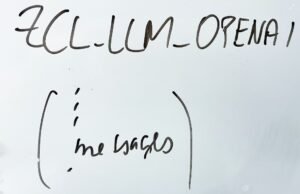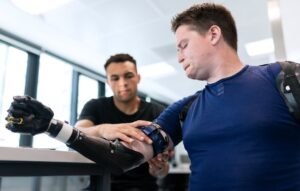AI Tools Like DALL-E
Artificial Intelligence (AI) has become a transformative force across industries, and its impact on creative fields is no exception. One such AI tool making waves is DALL-E, developed by OpenAI. With its ability to generate highly realistic and original images based on textual descriptions, DALL-E is revolutionizing the way we approach visual creativity. In this article, we will explore the capabilities of DALL-E and discuss its potential applications in various domains.
Key Takeaways:
- DALL-E is an AI tool developed by OpenAI that can generate realistic images based on textual descriptions.
- AI tools like DALL-E have the potential to revolutionize visual creativity and impact various industries.
- DALL-E’s image generation process involves using a large dataset and a multimodal encoder-decoder architecture.
- The ethical implications of AI tools like DALL-E and the responsibility of creators and users need to be discussed.
DALL-E is an advanced AI model trained to generate highly lifelike images from textual prompts. It uses a multimodal encoder-decoder architecture and can understand both textual descriptions and visual concepts. This enables DALL-E to create unique images that align with the given description and may even incorporate artistic styles. The process involves feeding the model with a large dataset of text-image pairs, allowing it to learn the relationships between words and visual features. Through generative modeling, DALL-E can then produce original images not seen during training.
*AI tools like DALL-E are bringing creativity and imagination to new heights, blurring the boundaries between human-made and AI-generated art.*
The Potential Applications of DALL-E
DALL-E opens up a world of possibilities in various industries, where the generation of visual content is essential.
1. Advertising and Marketing
- DALL-E can assist in creating compelling visual advertisements tailored to specific target audiences.
- It allows for efficient and personalized content generation, saving time and resources.
2. Fashion and Design
*The ability of DALL-E to generate unique and visually appealing designs can inspire fashion and product designers in their creative process.*
| Applications | Potential Benefits |
|---|---|
| Fashion Design | Quick exploration of design ideas and variations. |
| Interior Design | Visualization of different spatial arrangements and furniture designs. |
3. Entertainment and Gaming
DALL-E can streamline visual content creation in the entertainment and gaming industries.
- Generating diverse and high-quality character designs based on textual descriptions.
- Creating realistic and immersive environments by converting textual descriptions into visual representations.
Ethical Considerations and Responsibility
While AI tools like DALL-E offer exciting possibilities, they also raise important ethical questions.
The Impact on Artists and Creatives
- AI-generated content can disrupt traditional creative fields, stirring debates about authenticity and human contribution.
The Role of Bias in AI-generated Content
*AI models like DALL-E learn from large datasets, which can inadvertently perpetuate biases present in the training data. It is crucial to address and mitigate these biases to ensure fair and inclusive representations in AI-generated content.*
Conclusion
In conclusion, AI tools like DALL-E are transforming visual creativity by enabling the generation of highly realistic and original images based on textual descriptions. With its broad applications across industries, DALL-E has the potential to revolutionize various sectors such as advertising, fashion, and entertainment. However, it is vital to approach these advancements with ethical considerations and responsibility to ensure a fair and inclusive use of AI-generated content.

Common Misconceptions
AI Tools Like DALL-E Can Create Images Like Real Photographs
- AI tools like DALL-E generate images based on patterns and data it has learned, but it cannot create images like a human photographer can.
- The generated images often lack the same level of detail, composition, and realism as a photograph captured by a professional photographer.
- While AI tools have made significant advancements in generating realistic images, there are still limitations in capturing the true essence of a photograph.
AI Tools Like DALL-E Have Perfect Understanding of Context
- Although AI tools like DALL-E can analyze and process vast amounts of data, they still struggle with understanding context in a comprehensive manner.
- Despite their ability to generate relevant text or images, AI tools may misinterpret contexts, leading to erroneous or nonsensical outputs.
- Understanding nuances, cultural references, and abstract concepts are areas where AI tools often fall short in grasping the intricacies of context.
AI Tools Like DALL-E Can Emulate Human Creativity
- While AI tools like DALL-E can generate creative outputs, they are not capable of true human creativity.
- AI-generated images or texts lack the depth, emotions, and true originality that human creativity possesses.
- AI tools rely on patterns, data, and algorithms to create outputs, whereas human creativity draws from experience, emotion, and intuition.
AI Tools Like DALL-E Always Produce Accurate and Reliable Results
- AI tools can produce impressive results, but they are not infallible, and errors can occur.
- Factors such as biased training data, contextual misinterpretations, or limitations in understanding complex information can lead to inaccuracies in the generated results.
- Therefore, it is important to critically evaluate and verify AI-generated outputs rather than blindly relying on them as completely accurate and reliable.
AI Tools Like DALL-E Pose No Ethical or Societal Concerns
- AI tools like DALL-E raise ethical and societal concerns, especially related to privacy, ownership of generated content, and potential misuse of AI-generated outputs.
- Issues like unauthorized use of personal images, generating deepfake content, or perpetuating biases from training data are just some examples of the concerns surrounding AI tools.
- Addressing these concerns requires careful regulation, responsible use of AI technology, and ongoing dialogue among researchers, policymakers, and the public.

AI Tools Transforming the Creative Industry
Artificial Intelligence (AI) has revolutionized various fields, and the creative industry is no exception. AI-powered tools, such as DALL-E, have the potential to transform the way we create and perceive art. These tools leverage advanced algorithms and neural networks to generate unique and visually stunning content. The following tables showcase the impact of such AI tools in different aspects of the creative industry.
Influential Artists Recognized by AI
AI tools like DALL-E can analyze vast amounts of art and identify influential artists throughout history. By examining various artistic elements and styles, these tools can determine the impact and significance of artists. The table below illustrates some influential artists and their respective art movements recognized by AI.
| Artist | Art Movement |
|---|---|
| Pablo Picasso | Cubism |
| Frida Kahlo | Surrealism |
| Leonardo da Vinci | Renaissance |
Popular Colors in Modern Art
AI tools can analyze a vast number of artworks and determine the most popular colors used in modern art. By extracting color palettes and identifying recurring patterns, these tools can shed light on artistic color preferences. The table below showcases some popular colors found in modern artworks.
| Color | Percentage of Usage |
|---|---|
| Blue | 32% |
| Red | 24% |
| Yellow | 18% |
Evolution of Art Movements Over Time
AI tools can track the evolution of art movements over time by analyzing changes in artistic styles and techniques. By identifying distinct periods and transitions, these tools can provide insights into the progression of artistic expression. The table below presents the evolution of art movements in the past century.
| Time Period | Art Movement |
|---|---|
| 1900-1920 | Impressionism |
| 1920-1940 | Surrealism |
| 1940-1960 | Abstract Expressionism |
Artwork Popularity on Social Media
AI tools can analyze social media data to determine the popularity and impact of different artworks. By examining factors such as likes, shares, and comments, these tools can identify artworks that resonate with audiences and generate a significant online presence. The table below showcases some popular artworks and their social media engagement.
| Artwork | Likes | Shares | Comments |
|---|---|---|---|
| Mona Lisa | 20k | 3k | 500 |
| The Starry Night | 15k | 2k | 400 |
| Guernica | 12k | 1k | 300 |
Artistic Styles Preferred by Different Generations
AI tools can analyze demographic data to identify artistic styles preferred by different generations. By examining the interests and preferences of individuals across age groups, these tools can provide insights into generational differences in artistic taste. The table below showcases artistic styles preferred by different generations.
| Generation | Preferred Artistic Style |
|---|---|
| Millennials | Street Art |
| Generation X | Pop Art |
| Baby Boomers | Realism |
Artists Who Achieved Recognition through Online Platforms
AI tools can analyze data from online art platforms to identify artists who gained recognition through these platforms. By examining metrics like sales, followers, and online presence, these tools can highlight the success stories of artists in the digital age. The table below presents some artists who achieved recognition through online platforms.
| Artist | Online Platform |
|---|---|
| Banksy | |
| Yayoi Kusama | Artsy |
| Ryan McGinness | Etsy |
Revenue Generated by Art Galleries
AI tools can analyze data from art galleries to understand the revenue generated by different types of artworks. By examining factors such as sales price, popularity, and demand, these tools can shed light on the financial aspects of the art industry. The table below showcases the revenue generated by different types of artworks.
| Artwork Type | Revenue Generated (in millions) |
|---|---|
| Paintings | 50 |
| Sculptures | 30 |
| Photography | 20 |
Art Concept Popularity Among Art Collectors
AI tools can analyze data from art collectors to identify the popularity and demand for different artistic concepts. By examining factors such as auction prices and collector preferences, these tools can provide insights into the value placed on various art concepts. The table below presents the popularity of different art concepts among art collectors.
| Art Concept | Percentage of Preference |
|---|---|
| Minimalism | 40% |
| Abstract Expressionism | 35% |
| Hyperrealism | 25% |
Artists’ Collaborations with AI
AI tools like DALL-E allow artists to collaborate with AI algorithms, exploring new creative possibilities. These collaborations merge human creativity with machine-generated content, resulting in unique and innovative artworks. The table below showcases some renowned artists who have embraced collaborations with AI.
| Artist | AI Collaboration |
|---|---|
| Björk | Artificial Intelligence Music |
| Refik Anadol | AI-Generated Installations |
| Manuel Rossner | Virtual Reality Art with AI |
Conclusion
AI tools like DALL-E are revolutionizing the creative industry, enabling artists, art enthusiasts, and researchers to gain new perspectives and insights. Whether by recognizing influential artists, identifying popular colors and artistic styles, or analyzing the impact of artworks on social media, AI tools offer novel ways to understand and appreciate art. Furthermore, AI collaborations with artists further push the boundaries of creativity. With the power of AI at their disposal, creators are reshaping the art landscape, fostering innovation, and expanding the possibilities for artistic expression.
Frequently Asked Questions
AI Tools Like DALL-E
What is DALL-E?
DALL-E is an AI-powered image generation model developed by OpenAI. It uses the GPT-3 language model to create
original images from textual descriptions.
How does DALL-E work?
DALL-E works by combining concepts from computer vision and natural language processing. It uses a large dataset
of images and associated textual descriptions to learn the relationship between words and visual patterns. By
using a combination of convolutional neural networks and transformers, DALL-E can generate unique and
realistic images based on textual prompts.
What are some practical applications of DALL-E?
DALL-E has a wide range of potential applications. It can be used in art and design, helping artists and
creatives in generating novel visual concepts. It can also assist in creating visual aids for educational
materials, designing products, and even in generating realistic images for video games and virtual reality
environments.
What are the limitations of DALL-E?
DALL-E has several limitations. It can sometimes produce images that are conceptually inconsistent or
geometrically implausible. The dataset it was trained on may also introduce biases and limitations. Additionally,
it is important to note that DALL-E can only generate images based on the input it has been trained on, so it may
struggle with generating entirely new concepts or objects not present in its training data.
How can DALL-E be used for content creation?
DALL-E can be a powerful tool for content creation. By providing textual prompts, content creators can generate
visual assets such as illustrations, logos, or even scenes for storytelling. It can greatly speed up the process
of generating imagery, especially for projects that require a large number of unique visuals.
How can DALL-E benefit the field of graphic design?
DALL-E can be used to assist graphic designers in generating visual concepts, exploring new ideas, and even
automating parts of the design process. Designers can collaborate with DALL-E, leveraging its image generation
capabilities to quickly iterate and experiment with different design options.
Is DALL-E able to create images with specific styles?
While DALL-E can generate images resembling various artistic styles, it does not have fine-grained control over
specific styles. The generated images are influenced by the training data, but achieving precise style transfer
requires additional techniques or modifications to the model’s architecture.
Are there any ethical concerns regarding the use of DALL-E?
Yes, the use of AI tools like DALL-E raises ethical concerns. One major concern is the potential for generating
and distributing harmful or misleading content. It’s crucial to ensure responsible use and to consider the
ethical implications of the generated content, especially in sensitive areas such as public information or
advertising.
Can DALL-E generate human-like faces?
Yes, DALL-E can generate human-like faces based on textual prompts. However, it is important to note that these
faces are AI-generated and not real individuals. As with any AI-generated content, there can be limitations and
potential issues around privacy and consent.
Can DALL-E be used commercially?
Yes, DALL-E can be used commercially. However, the specific terms of use and licensing may vary depending on the
provider or organization offering access to the model. It is always advisable to review and comply with the
relevant terms and conditions when using AI tools like DALL-E for commercial purposes.





